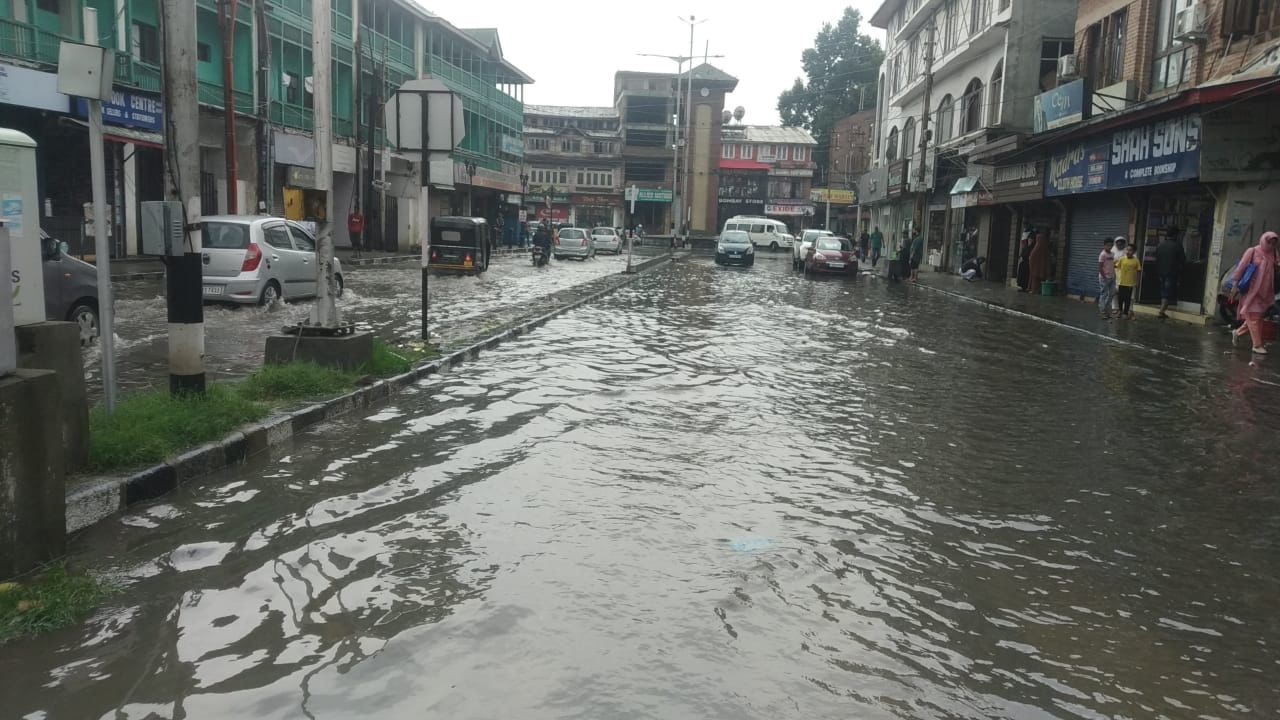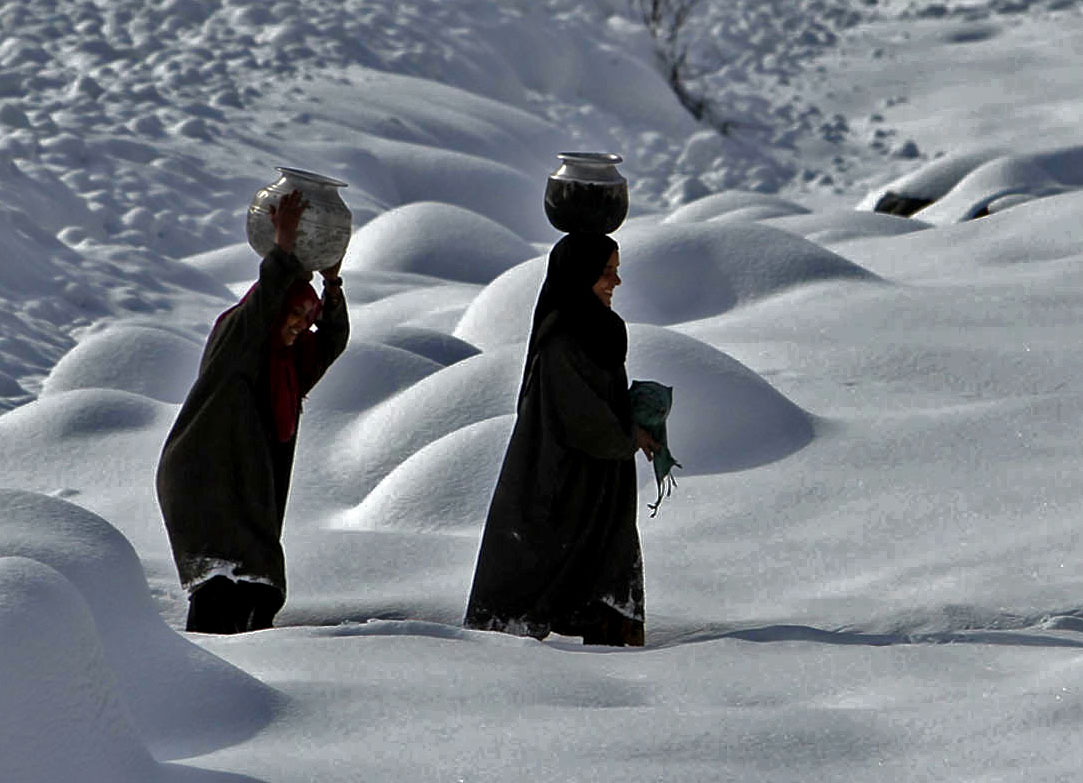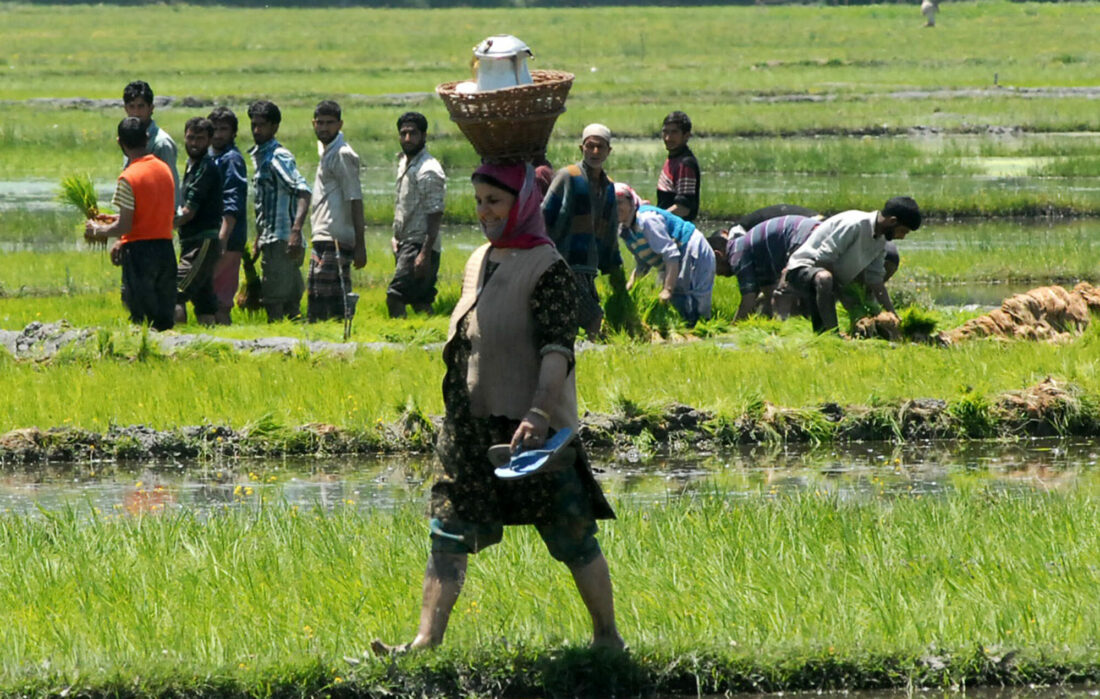With Western Disturbances moving all the greenhouse gases from the Atlantic to the Pir Panchal peaks, Kashmir is gradually emerging as a collateral victim of climatic change. Water scarcity has already impacted agriculture in an erstwhile water-abundant area and now experts foresee Srinagar not having snow at all in near future, reports Mohammad Fazil Buchh

Chillai Kalaan used to be a very harsh part of winters in Kashmir. For the entire 40-day period, Kashmir would remain draped in frozen snow. In anticipation, residents would make preparations, especially for the heating equipment like traditional kangris, and its charcoal fuel, dried vegetables and woollens.
In the last few decades, the patterns have changed as the unpredictability in weather has increased. There is a decline in the snowfall especially during Chillai Kanalan as more snow falls at the fag end of the winter. There is more wet snow and less powder snow. Even the snowline has gone up, much higher than the tree line. Experts insist that these are the basic indicators of climate change.
Shifting Patterns
Analyzing the data since 1886, the experts see a remarkable shift in precipitation trends over the last few decades in Kashmir. There is a sharp decline in the amount of snowfall received by Srinagar in Chillai Kalaan in the last 30 years, they say.
“If you go through any research conducted on Kashmir or go through the instrumental records of Indian Meteorological Department which is having the longest temporal record of meteorological observations as far as climate change is concerned, the data indicates in terms of temperature statistically significant increase in trends, both annual trends as well as seasonal,” Dr Irfan Rashid, an Assistant Professor in the Department of Geo-Informatics, at the University of Kashmir said. “Earlier there used to be only snowfall in winters but now we are witnessing rainfalls in winters. It is because the minimum average temperature in winters has significantly increased, which does not allow water vapours to precipitate as snow. That is the reason we witnessed three snowless chillai kalaans in last decade and that too post 2014.”

KL Image by Bilal Bahadur
Rising temperatures apart, a form of precipitation has also changed. Instrumentation records of the Indian Meteorological Department suggest that there is no change in total rainfall but we observe significantly depleting trends in snow precipitation in the previous thirty years. It is not just rising temperatures and change in the form of precipitation but we say that climate change is associated with erratic weather patterns”.
Early winters
Kashmir region received extensive snowfall in the first week of November in the last few years damaging apple orchards. IMD’s observations indicate a 9-12 degree Celsius rise in temperatures for the months from February to April in 2022. This triggered the early melting of snow over the mountainous regions, which was already low due to depleted snowfall this year. Most of the mountain passes like Razdaan Pass and Sadhna Pass were opened by or before March 15, which is very early as compared to previous winters. In certain cases, the road managers successfully permitted vehicular movement on both these passes – linking to Gureaz and Tangdar, during the winters as well because there was not much snow accumulation.

Climate experts worry that the frequency of these erratic weather patterns be it snowfall, heat waves, or drought-like situations might escalate in future.
Depleting Glaciers
The phenomenon of glacier melting is taking place on a large scale in Kashmir. Kolhai and Machoi glaciers received a decent amount of snowfall last month but it took only few days for the snow to melt, people monitoring the developments said.
Major Kashmir glacier, the Kolahoi that feeds Lidder and Sindh rivulets, both tributaries of Jhelum, has lost almost 23 per cent since 1962. A 2018 study led by Prof Shakil Ramshoo, used satellite mapping to study 147 glaciers and revealed that between 1980 and 2018, a reduction of 28.82 per cent, much higher than in other Himalayan regions. Glaciers up to 4200 meters above sea level have literally disappeared. Now only four water bodies have some glacier source.

Ramshoo earlier said that the glaciers in the Pir Panchal range are receding by more than a meter a year, which is huge in comparison to the almost 10-cm reduction in glaciers in the Kaokaram range. The most accessible Thajiwas glacier that tragically has been converted into a tourist spot has lost about 50 meters in the last 3 years. Ramshoo had said that earlier it used to lose 3.38 meters a year but after 2017, it started losing 17 meters a year. Between 1972 and 2019, the Machoi glacier in Drass lost 29 per cent of its area.
There is another major contributor to the fast depletion of the Kashmir glaciers, especially over the Pir Panchal. Thick coats of soot and dust, an outcome of industrialisation and massive vehicular traffic, are moving towards the Kashmir Mountains and settling over the glaciers. This, experts insist, triggers early melting.
The glacier melting at such a pace is indicative of the fact that temperatures are still soaring and it is expected that there may be an incremental rise in mercury in the coming days in the Kashmir region, making people face the brunt of extreme heat wave.
Drought like situation
In June, a drought-like situation emerged in many parts of Kashmir. Though the Irrigation and Flood Control department had suggested the peasants to avoid growing paddy in their rice fields and instead choose maize or other crops, they avoided a change. The situation improved to some extent on June 20, after many days of heavy rainfall but it did not help many of these areas to manage the irrigation deficit.
Most of the water bodies in Kashmir are flowing with the least discharge. It is impacting agriculture to a large extent the generation of hydropower.

“We observed a less flow of water in Jhelum and its 24 tributaries during the spring season creating anxiety among our agricultural farmers who were worried about their crops, especially paddy which is hugely dependent on water,” Dr Irfan said. “The rain helped in raising the water levels in Jhelum but within a few days, we again saw depleted flow. It will have a huge impact on agricultural production.”
The winter snow in freezing temperatures usually gets stored above the peaks and melts gradually with the onset of summer. Ideally, the temperatures would gradually increase and the glacial melt would remain steady. The temperature increase would happen gradually and continued feeding the rice fields. Now, however, the temperatures start rising quite early – sometimes as early as February, which leads to early melting of snow deposits, if any. By then, it is not required downstream as sowing starts much later.
Moreover, a significant decrease in the snowmelt contribution to stream flow in the basin is predicted in the future. Significant changes in the hydrograph are predicted under all the climate change scenarios due to the variations in the snowmelt contribution, particularly during the spring and summer seasons.
Various studies suggest the snow accumulated during winters is expected to melt and disappear early in response to the projected temperature rise in the basin, which would bring about a shift in the stream-flow peak in the future from summer to early spring under climate change. There is a noticeable shift in stream-flow peak, which is clearly evident from the analysis of the data since the 1990s in the downstream areas of the basin.
Sprawling Rice Fields
Paddy is the staple food for the people living in the Jhelum basin. It needs irrigation during its growth period starting from June onwards till harvesting in September and in certain cases in October as well. The paddy transplantation starts in June and coincides with the existing stream-flow peak in the tributaries of the Jhelum River.
Since paddy, the main agricultural crop in the Jhelum basin is cultivated only during summer, it is believed that the projected shift in the stream-flow peak towards spring would mean that the paddy fields would face water shortages during the peak paddy crop water demand period coinciding with the growing season. This adversely affects the productivity of the crop, thereby threatening the food security and livelihood of the people dependent upon agriculture and other allied sectors which constitute a significant part of the gross domestic product (GDP) of the region.
The impact is expected to be more serious in the lower Jhelum basin because the stream flow in the downstream areas of the basin is more dependent on the snowmelt and less on the glacier melt. Further, the projected increase of stream flow during the spring season due to the enhanced melting of the snow is supposed to enhance the probability and frequency of flooding as the basin already receives the maximum proportion of rains during this season only.

However, as of now, no infrastructure has been provisioned in the basin to store the floodwater and the predicted surplus water in the basin during spring by the end of the twenty-first century. Therefore, in order to overcome the adverse impacts of the changing climate on the future stream flow and the consequent flooding in the basin, it is suggested that the water storage infrastructure, as provided under the Indus Water Treaty (IWT), needs to be developed on priority in the basin, to reduce the anticipated risks and challenges of flooding and to sustain the agriculture and other water-dependent sectors of the economy under the projected climate change scenarios.
Green House Gases
Anthropogenic activities like the excessive use of automobiles contribute to climate change because they release greenhouse gases into the atmosphere, which remain there up to 140 years. The air current brings these greenhouse gases like Carbon Dioxide to Kashmir from the hotspots across the globe.
According to Dr Irfan, the Kashmir basin has a bowl-shaped topography, which means that any rise in water level will push water to go into a bowl-shaped depression before it finally drains into Pakistan through the Uri gorge. Extreme precipitation for four to five days will result in a flood.
Jhelum basin has witnessed massive urbanization in recent decades. There has been a significant shrinkage in the wetland cover in the Kashmir region with Srinagar alone losing around 50 per cent of its wetland cover in the last century. These wetlands act as flood sinks and when people started to reside within these sinks, it will naturally make them more prone to floods.
Irfan stresses the need to formulate a robust resilient climate policy for which academics, scientists and researchers should be consulted. The climate mitigation measures should be taken and implemented through proper inputs from the scientific policy.
Receding Snowfall
Experts fear that the prevailing trend of depleting snowfall is going to become more frequent in the future. They foresee Kashmir getting only thirty per cent of the snowfall by the end of this century. There will be almost no snowfall in Srinagar in near future and the people will have to go to places like Sonamarg and Pahalgam to see snow.
“Kashmir has been witnessing snowfall in early November in last few years due to which a lot of damage happened to our fruit,” Ramshoo, the earth science expert now the VC of the IUST, Awantipora, said. “This is because of climate extremes. It was very hot in February 2021 and in 2022 it was very hot March – Kashmir had the hottest March in 131 years. Kupwara and Badharwah temperature in March this year was 13 to 14 degrees above the long-term normal. Early March was very wet; we had a lot of snowfall. This unpredictability in the weather is called climate change.” Natural as well as anthropogenic reasons contribute to climatic change. It is a global phenomenon. In mountainous regions like Kashmir, its impact is more severe.
Surging Temperatures
One of the indicators is that in the previous century the global temperature has increased by less than one degree Celsius. But in Kashmir, the data of 35 to 36 years shows it was 1.3 degrees Celsius. “We have warmed more,” Ramshoo said. “This is true for all the mountainous regions globally. They are more sensitive to climate change. This is very unfortunate in a place like Kashmir where there is no industrialization and we are not contributing to the climate change but we are facing the brunt of climate change.”
Since the problem is global, the action has to be on a global level as well. Kashmir does not contribute much to global change. Western Disturbances originate from the Atlantic Ocean, Europe, and West Asia and the emission of greenhouse gases in those areas due to industrialization is being carried by air masses to this part of the world and our temperature rises.
At the COP-26 meeting, which took place in Glasgow, India said that it will be carbon neutral by 2070. In India, around 70 to 75 per cent of the energy is generated through coal, which contributes massively to the emission of greenhouse gases. As such national and international action is essential in order to stop the rising temperatures.
“This does not spare us from our individual role in stopping climate change. In a recent report, it came out that we have more than a million vehicles, which was about 6 lakh in 2008,” pointed out Ramshoo. “So the number has almost doubled in last 10 to 15 years. If we will have an efficient public transport system, we can save a lot of emissions. The burning of biomass and wood burning weather c and deforestation can be controlled by local governments by implementing various policies. The plantation will help in the absorption of CO2, which is a major greenhouse gas. Local actions are important as well but it has to be massive global action.”
Role of Media
The media plays an important role in spreading awareness regarding climate change. There is a need for massive improvement when it comes to scientific reporting. Climate change is a complex issue. There is ignorance among the journalists regarding the subject which stops them from reporting properly on climate change. Romshoo said that media has a very important role to play not only in spreading awareness among the common public but in policy-making as well. Journalists should be properly trained about the subject so that they are able to put the things related to climate change in the right perspective rather than sensationalizing them. The government has an important role to play but we cannot exclude our individual responsibilities. People must know the role of various stakeholders in preventing the devastations that would be triggered by climate change. Before that, understanding the contributors to climatic change is important.















